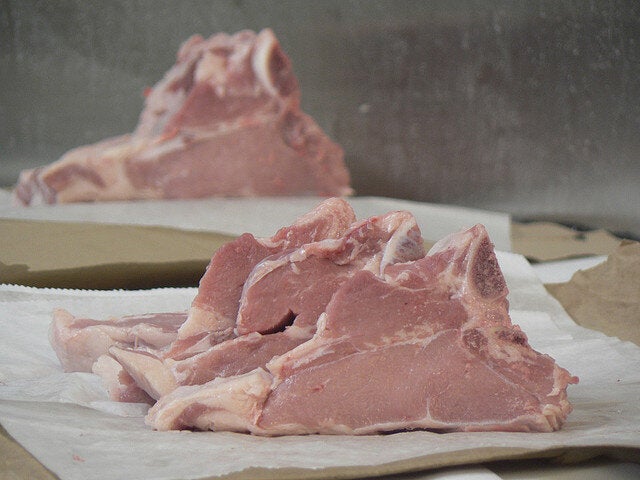
When it comes to rich, flavorful, tender meat, it is hard to beat veal. While still enormously popular in Europe, especially in France, Italy and Germany, it is much harder to find in the U.S., and harder still here in Iowa. This may be due in part to its price, but more likely it has to do with ethical concerns.
Veal that is produced on a large scale is done so in confinement. The calves are crated in very small pens, or sometimes even bound and lifted off the ground to reduce muscle development and keep the meat tender (though it's also less flavorful). The conditions in these confined animal feeding operations are cruel, and many cannot support such practices in good conscience. The bad news is that if you feel this way, you need to forgo all commercial meat, because beef cattle, chickens, pigs and lambs are all treated this way.
The good news is that you can enjoy the luscious flavor of high-quality veal without setting your ethics aside. The way to do it is to obtain your meat locally, from small-scale farmers you can know and trust. One such farm is called Grass Run, owned by Ryan and Kristine Jepsen in Dorchester, Iowa, north of Waukon. There they raise not only outstanding beef and pork, but delicious, happy veal calves, as well. They raise their animals on pasture, and calves live by their mothers' sides, nursing the way nature intended. All Grass Run's livestock eat what they are meant to eat, and never receive hormones or antibiotics. You can learn more at GrassRunFarm.com.
And for those of you not fortunate enough to live here in Iowa, you can find a sustainable source near you at LocalHarvest.org.
The result of the kind of care that the Jepsens and other conscientious farmers use is truly luscious, tender, savory meat that can become the center of some classic dishes. Perhaps the best known of these is Ossobuco, which, literally translated, means "bone with a hole," and is cut from the foreshank. It is then braised with vegetables and veal stock, and traditionally it is served atop saffron risotto with a condiment called gremolata -- a mix of garlic, parsley, lemon zest and anchovy that cuts through the fat for a zesty complement to the savory meat.
Two other well-known dishes are veal scallopini and veal piccata. Now, "scallopini" really just refers to the particular cut of meat, what we call a cutlet, but usually this name is applied to cutlets that are tenderized with a mallet, dredged in seasoned flour, then sautéed and finished with mushrooms and Marsala (an Italian fortified wine).
Piccata is a similar dish, but instead of Marsala and mushrooms, the cutlets are topped with a sauce of lemon, white wine, parsley and capers (see below). Occasionally, some julienned prosciutto is added as well. Veal is a sweet meat, so the counterpoint of lemon and capers suit it well.
So don't be afraid to enjoy veal -- just be sure you know the source.
Veal Piccata
1/2 cup all-purpose flour
2 teaspoon salt
1/2 teaspoon freshly ground black pepper
4 veal cutlets, about 3/4 pound, pounded with a meat tenderizer to a thickness of 1/8-inch
1 1/2 tablespoon olive oil
1 garlic clove, chopped
1 lemon, zested and juiced (add more if you like)
2 tablespoon capers, drained
1 tablespoon chopped parsley leaves, optional, plus sprigs for garnish
1 cup dry white wine
1/2 cup veal or chicken stock
1/4 cup butter, cut up
Season the flour with the salt and pepper, then dredge the veal cutlets in the flour. Heat a large sauté pan over medium-high heat and add the olive oil. Brown the veal on both sides (2-3 minutes each side) then remove to a warm plate.
Reduce the heat to medium, then add the garlic, lemon zest, capers and parsley, and sauté lightly until the garlic is tender, but not browned. Add the wine and stock, then simmer to reduce volume by half. Whisk in the butter, a little at a time, until all melted. Pour over the veal cutlets and serve immediately.
Serves 2.